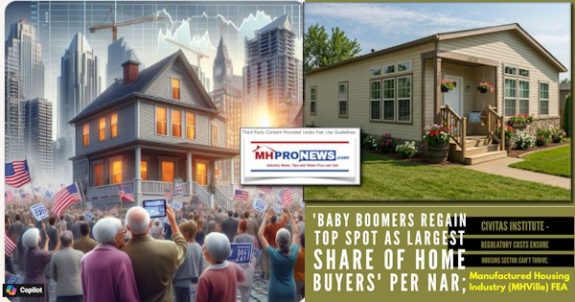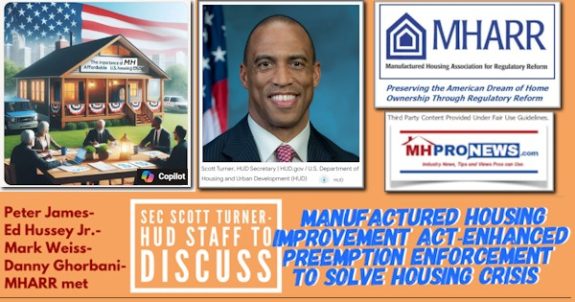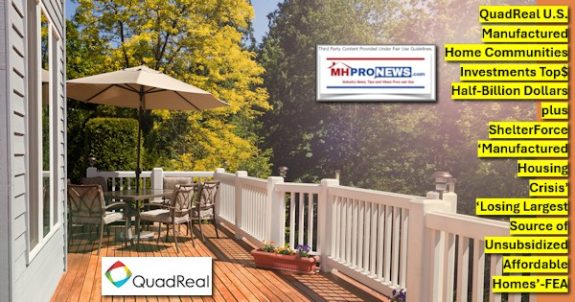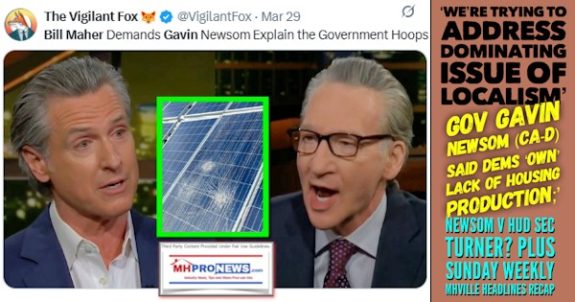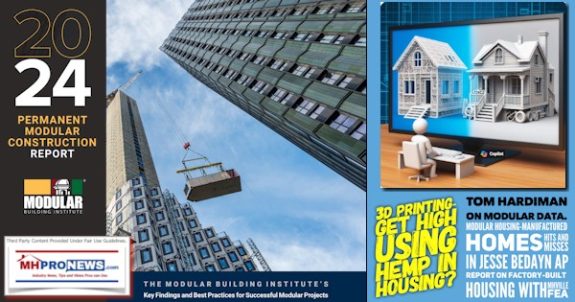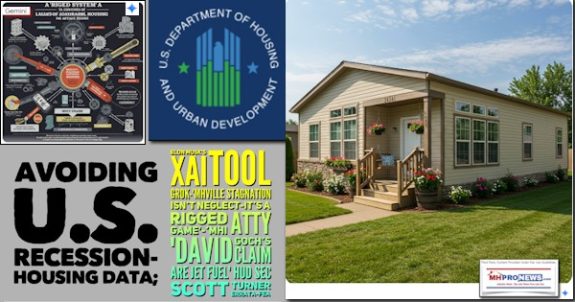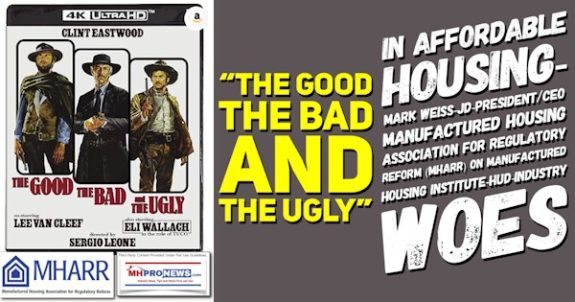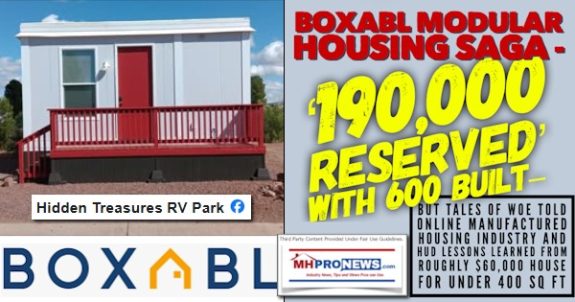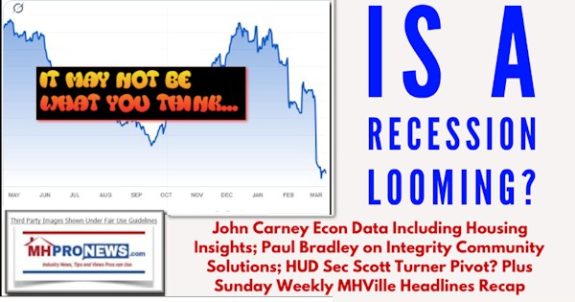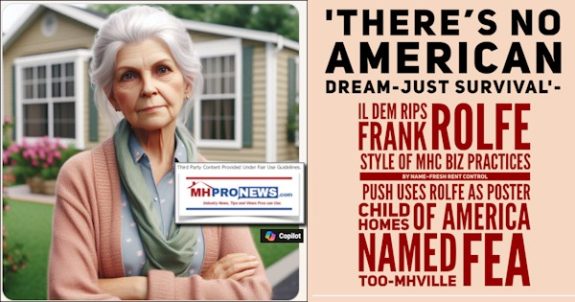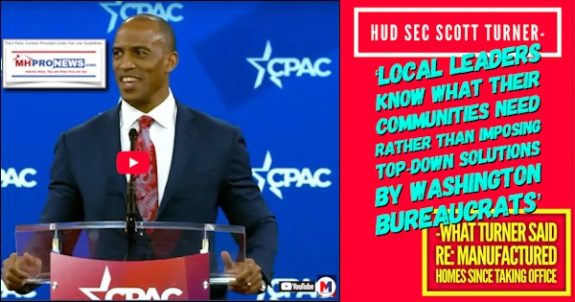Home Builder Sentiment Stuck at Low Level in August
The National Association of Home Builders/Wells Fargo home market index held at 15 this month on a seasonally adjusted basis. Readings above 50, not seen since April 2006, are considered favorable. “The uncertain economic climate and concerns about job security are discouraging many potential buyers from exploring a home purchase at this time,” said the chief economist for the organization, David Crowe. Faulty appraisal values, the inability of prospective buyers to sell their existing residence, and tight lending standards are other factors dragging down the market. According to NAHB, traffic of prospective buyers and current sales conditions — two of the index’s three components — rose slightly. However, the component measuring sales expectations for the next six months fell a couple of points.
From “Home Builder Sentiment Stuck at Low Level in August”
Bradenton Herald (FL) (08/16/11) Goldstein, Steve
New Home Construction Slumps in July
Housing starts declined last month, the Commerce Department reported. According to the agency, homebuilding slipped 1.5 percent to an annual pace of 604,000 units. At the same time, the number of permits to construct new housing fell 3.2 percent in July to a rate of 597,000 units on an annualized basis. Both statistics are down following unexpected gains in June, but groundbreakings and building permits are up 9.8 percent and 3.8 percent, respectively, from a year ago.
From “New Home Construction Slumps in July”
Chicago Tribune (08/16/11)
Preserved Federal Mortgage Role Sought
President Barack Obama reportedly is working on a proposal to maintain the government’s role in the mortgage market and provide a federal loan subsidy to most home buyers. The proposal being drafted by a small group of advisors likely would revolve around 30-year fixed mortgages with low interest and possibly even keep Fannie Mae and Freddie Mac in place, although the companies would operate under different names and new constraints. Although Obama appears to be leaning toward keeping some kind of government role in place for the mortgage market, administration officials stressed that the president has not made a decision on any of the three options to reform the housing finance system that were detailed earlier this year in a white paper. Any move to revamp the system would be phased in over the course of five years, they said.
From “Preserved Federal Mortgage Role Sought”
Washington Post (08/16/11) P. A1 Goldfarb, Zachary A.
Low Rates Alone Not Seen Reviving Housing Market
Long-term mortgage rates have dipped to near-record lows thanks to turbulence in the financial markets, but the favorable borrowing costs are not expected to invigorate the struggling housing sector. That is because about half of all U.S. homeowners do not qualify for the rock-bottom financing. In order to get the best rates, Inside Mortgage Finance publisher Guy Cecala says consumers must have solid credit. They also must own a home that is valued 20 percent above what is owed on it, he says, but residential depreciation has made this an impossibility for many borrowers. Helping homeowners like these to refinance and line their pockets with some extra cash would go a long way toward buoying the economy, according to some, but government intervention may be necessary. Columbia Business School housing economist Chris Mayer and colleague Glenn Hubbard have come up with a proposal that Mayer says would help 25 million households shave hundreds of dollars each month off their mortgage payments. “This would be a big positive effect on the economy in terms of consumer spending,” he explains. “And it would reduce the incentive for people to walk away from their mortgages.” Mayer says millions of home loans already have a government guarantee because they are backed by Fannie Mae and Freddie Mac. “We should reduce the risk of those mortgages by extending a guarantee to a new mortgage that somebody would get at a lower interest rate,” he suggests. Martin Barnes, chief economist at investment firm BCA Research, also likes the idea of a national refinancing initiative. “If you’re going to do something about housing,” he speculates, “you should make it available to everyone.”
From “Low Rates Alone Not Seen Reviving Housing Market”
National Public Radio (NPR) (08/15/11) Arnold, Chris
Mortgage-Bond Selloff Threatens Rebound in U.S. Commercial Property Market
The U.S. commercial real estate market’s slow recovery may be curtailed as Europe’s debt crisis and Standard & Poor’s credit downgrade of Treasuries push borrowing costs to their highest in more than a year. The outlook worsened in the past month amid a selloff in securities tied to debt on properties such as office buildings and retail centers. Life insurers, which usually finance the highest-quality properties and hold the loans instead of bundling them for resale to investors, have thus far not widened the spreads they are quoting in response to the commercial mortgage-backed securities market, said Michael Riccio, head of national production in CB Richard Ellis’s capital markets debt and equity finance division in Hartford, Conn. From 2005 to 2007, the firm depended on life insurers to finance about 30 percent of its deals, Riccio said.
From “Mortgage-Bond Selloff Threatens Rebound in U.S. Commercial Property Market”
Bloomberg (08/10/11) Yu, Hui-Yong; Louis, Brian; Mulholland, Sarah
Market Share on Rise for Manufactured Housing Industry
As the United States continues to grapple with a shaky economy, one component of the housing sector believes it holds a key economic solution for struggling Americans. Manufactured home sales in the United States have dropped by 57 percent over the past five years. While the economic and housing crises have slowed the rate of construction of manufactured housing units, the decline is well below the site-built homes segment, which has seen a much more precipitous decline. Joe Stegmayer, chairman and CEO of Cavco Industries, Inc., believes cost will be a primary factor in why manufactured homes will deliver home value for the future. “Manufactured homes offer quality housing at costs from 10 to 35 percent less than site-built construction,” points out Stegmayer, who is MHI’s chairman. “As people continue to see utility costs rise with inflation, they will appreciate the cost savings achievable with energy-efficient manufactured homes.” Phyllis Knight, Executive Vice President and Chief Financial Officer of Champion Home Builders, Inc., also emphasized how important value is for home buyers now. “In today’s economy, buyers are very value conscious. Also, lenders are very strict in qualifying borrowers for loans relative to years past,” Knight said.
From “Market Share on Rise for Manufactured Housing Industry”
RealEstateRama (08/03/2011)
Equity Lifestyle Closes on 16 Properties for $436 Million, Obtains $100 Million of Secured Financing
Equity LifeStyle Properties (ELS) has closed on 16 more of the 75 manufactured housing assets that it is acquiring as part of a $1.43 billion portfolio. It paid roughly $436 billion for the latest purchase, which followed the July 1 closing on 35 other properties. ELS expects to close on the final 25 assets in the portfolio — which includes properties in 16 states altogether — by Oct. 1 of this year. The company bankrolled the recent closings through a combination of common stock issuance, mortgage debt assumption, and cash.
From “Equity Lifestyle Closes on 16 Properties for $436 Million, Obtains $100 Million of Secured Financing”
Senior Housing News (08/11/11) Gerace, Alyssa
Cavco Industries Reports Fiscal First Quarter Results
Factory-built housing company Cavco Industries announced its results for its fiscal 2012 first quarter, which included financials stemming from the completed acquisition of Palm Harbor Homes Inc. by Cavco subsidiary Fleetwood Homes Inc. Phoenix-based Cavco reported net sales for the three months of $98.9 million, more than double the tally of $47.5 million a year earlier. Net income surged as well on an annual basis, bouncing up to $17.4 million from $850,000 over the 12-month period. “During this eventful quarter, we closed on the Palm Harbor transaction and continued the associated operations under their new ownership structure,” Joe Stegmayer, Cavco’s Chairman and CEO remarked. “Certain streamlining actions have taken place which should improve operating efficiencies and financial performance over time.”
From “Cavco Industries Reports Fiscal First Quarter Results”
MarketWatch (08/08/11)
UMH Properties Inc. Reports Operating Results
UMH Properties Inc. has released its latest operating results, which were highlighted by a surge in manufactured home sales as well as a jump in income from community operations. According to the filing, sales of manufactured homes for the quarter ended June 30, 2011, were up 43 percent to $1.55 million from $1.09 million in June 2010. For the first six months of the year, volume climbed 4 percent year over year to $2.64 million from $2.54 million. Income from community operations, meanwhile, grew to $3.68 million for the quarter compared to $3.12 million a year earlier. The total for January through June 2011 was $7.37 million — up from $6.39 million during the same period of last year.
From “UMH Properties Inc. Reports Operating Results”
GuruFocus.com (08/09/11)
Prefab, But Far From Ordinary
Though frequently less expensive than stick-built homes, prefabricated homes can offer just as many amenities and can be quite customizable. On one end, there are factories that make econoboxes that, despite airtight engineering, can resemble shipping containers. They include the one-bedroom, one-bathroom “i-house” offered by Clayton Homes in Tennessee, which can be purchased for a base price of $75,812. Once upgraded flooring and appliances are added in, the tally comes to about $85,000 including delivery — or about $117 a square foot. At the other end of the price spectrum are such companies as California-based LivingHomes, which offers high-end contemporary designs at upwards of $250 per square foot and much more for custom layouts. What you are getting, according to the company, is a towering architect-designed house — steel frame and lots of glass — for 20 to 40 percent less than a similar house would cost if it were built on site.
From “Prefab, But Far From Ordinary”
Washington Post (07/23/11) P. E3 McKeon, Nancy
NC Offers Rebate on Energy Star Manufactured Homes
Buyers of Energy Star-qualified manufactured homes in North Carolina now are eligible for rebates of up to $1,500 — triple the previous amount. Officials with the North Carolina Energy Office said the rebate is meant to help home buyers make down payments on energy-efficient manufactured housing. The rebate is funded by money from the federal stimulus bill. “During the summer, consumers are even more aware of their power bill at home, and we are encouraging people to save money and save energy,” N.C. Energy Office Director Ward Lenz said in a statement. “This is a program that helps consumers and also our state’s economy, including out of state-based manufacturers and retailers.” While the occupants of a 1,570-square-foot manufactured unit would pay $25 more each month on their mortgage, their utility bills would be reduced by $73 — working out to monthly overall savings of $48. Owners of new Energy Star homes also qualify for a 5 percent discount on utility bills from Progress Energy and Duke Energy.
From “NC Offers Rebate on Energy Star Manufactured Homes”
WRAL.com (08/03/11)
Keiser Homes Lands $2M State Housing Contract
Keiser Homes, an Oxford, Maine-based modular home builder, won a contract for up to $2 million to erect homes for the Maine State Housing Authority. The company will provide homes to replace aging housing units as part of MSHA’s pre-1976 Mobile Home Replacement Program. The program provides low-interest and zero-interest loans to state residents who live in pre-1976 mobile homes and who are eligible for heating assistance. MSHA will approximately split the homes it uses between Keiser and an out-of-state builder of manufactured housing, according to MSHA Deputy Director Adam Krea.
From “Keiser Homes Lands $2M State Housing Contract”
Lewiston Sun Journal (ME) (07/29/11) Reaves, Tony
Speaker’s Stand: Providing Facts on Manufactured Homes
In response to recent newspaper pieces on requisite storm shelters in manufactured home communities, Alabama Manufactured Housing Association executive director Sherry Norris suggests in a letter to the editor that a more equitable alternative would be for municipalities to provide the protection for all citizens. She notes that manufactured homes have demonstrated the ability to withstand hurricane-force winds even as site-built houses and businesses have been ruined by the same storms. It makes no sense then, Norris writes, to discriminate against residents of manufactured homes when all kinds of structures are vulnerable to the worst weather disasters. According to Norris, manufactured housing communities and site-built properties alike can benefit from a 2001 congressional law giving local governments the authority to use Community Development Block Grant money to erect shelters.
From “Speaker’s Stand: Providing Facts on Manufactured Homes”
Anniston Star (08/13/11) Norris, Sherry
MHI News
MHI Focused on Industry Provisions as Debt Deal Legislation Signed
The first week of August, President Obama signed into law the Budget Control Act of 2011 (S.365), which establishes a process for increasing the $14.3 trillion statutory debt ceiling by at least $2.1 trillion and results in deficit reductions of at least $2.1 trillion over 10 years.
Overall, President Obama and Congressional Democrats successfully secured debt limit increases large enough to extend through the 2012 elections, while Congressional Republicans were equally successful in preventing deficit reduction without revenue increases.
However, the Act’s creation of a 12-member Joint Select Committee on Deficit Reduction, tasked with reducing the deficit by at least $1.2 trillion through fiscal 2021, virtually guarantees that a tough debate over the national debt—particularly as it relates to taxes and entitlement spending—will resume quickly when Congress returns in September. This will certainly impact several key industry tax provisions.
Below are major manufactured and modular housing tax provisions that MHI staff are lobbying on:
• ENERGY STAR Tax Credit: Presently, manufacturers who build ENERGY STAR homes are eligible to receive a $1,000 tax credit while modular home builders are eligible to receive a $2,000 tax credit by exceeding the International Energy Conservation Code (IECC) by 50 percent. This tax credit is set to expire in December of 2011.
• Taxation of “Carried Interest”: “Carried Interest” allows real estate investment trusts, private-equity firms and other partnerships to pay tax rates on their profits that are lower than rates paid by salaried and hourly workers. An increase in the tax rate will adversely affect our communities that are real estate partnerships and will have a profound affect on smaller developers/owners who are already feeling the ill effects of capital constraints in the marketplace.
• Mortgage Interest Deduction: Despite its popularity among homeowners, real estate agents, and builders, talk is building on Capitol Hill and in policy circles of scaling back or eliminating the mortgage-interest tax deduction. It was estimated by Congress’ Joint Committee on Taxation that between 2011 and 2013, this deduction will allow about $360 billion in potential tax revenue.
As Congress looks for ways to close the deficit gap, MHI staff will be monitoring these critical issues and coordinating a targeted grassroots effort.
Below is a summary of the key provisions of the bill:
Debt Ceiling Increase
The Act creates a two-step process for increasing the debt ceiling by an amount between $2.1 trillion and $2.4 trillion. Upon passage, the Act provides a $900 billion debt ceiling increase—$400 billion is immediate and an additional $500 billion is subject to a congressional joint resolution of disapproval that can be vetoed by the President—that will provide sufficient government borrowing authority through 2011.
The second increase —expected in early 2012—is contingent on Congressional approval of recommendations developed by the newly created Joint Select Committee on Deficit Reduction. If Congress approves recommendations that enact savings of $1.5 trillion, or alternatively, if Congress approves a Balanced Budget Amendment to the U.S. Constitution and sends it to the states for ratification, then the debt ceiling would be increased by $1.5 trillion.
Spending Cuts
The legislation places automatic spending caps on years 2012 through 2021. According to the Congressional Budget Office (CBO), these savings would amount to $917 billion over 10 years, starting with a $25 billion reduction in fiscal year 2012 and a $47 billion reduction in fiscal year 2013.
The overall spending cap for fiscal 2012 would be $1.043 trillion, $6 billion less than current levels. In order to avoid sacrificing domestic spending on behalf of more security spending, a “firewall” would be erected between security and non-security accounts for both fiscal years 2012 and 2013, essentially creating two separate spending caps for security and non-security spending.
Bipartisan Joint Congressional Committee
The bill requires the Joint Select Committee on Deficit Reduction to develop a proposal cutting the deficit by at least an additional $1.2 trillion over 10 years. The committee is required to report this legislation to Congress by November 23, 2011. The House and the Senate must vote on the proposal by December 23, 2011.
If the Joint Committee fails to produce a proposal containing at least $1.2 trillion in savings, a process is triggered that would automatically cut spending across the board.
The first automatic cuts would take effect January 2, 2013 and would fall equally on defense and non-defense accounts. Defense cuts and national security activities of several other agencies would be capped at $546 billion in fiscal 2013 and $556 billion in fiscal 2014. All other non-security funding—including military construction, Veterans Affairs and Homeland Security funding—would be capped at $501 billion in fiscal 2013 and $510 billion in fiscal 2014.
Medicare will also face limited cuts. Social Security, Medicaid, veterans and civil and military pay, funding for the wars in Iraq and Afghanistan and overseas contingency operations would be excluded.
MHI Comments on “Ability to Repay” Proposed Rule
MHI submitted formal comments in response to proposed rules developed by the Federal Reserve Board implementing ability-to-repay requirements outlined in the Dodd-Frank Act.
Under the Act, creditors must verify a consumer’s ability to repay a loan prior to making a mortgage, including personal property loans on manufactured homes. Under safe harbor provisions in the Act, a lender can potentially satisfy these requirements by originating a “qualified mortgage,” which is a new definition outlined in the Act.
In addition to satisfying ability-to-repay requirements, those making “qualified mortgages” also potentially avoid being classified as a “higher risk mortgage,” which requires an appraisal of a dwelling (including manufactured homes) prior to closing on the home transaction.
To be a “qualified mortgage” the loan transaction must meet several guidelines, including: limits on points and fees; loan terms must not to exceed 30 years; it must meet yet-to-be-determined debt-to-income ratios; and must be a loan that fully amortizes.
MHI’s comments to the proposed rule focused on several areas, including:
• Treatment of manufactured home sellers: MHI urged the Board to clarify and reinforce its proposed rule that sellers of manufactured homes may assist consumers throughout the home buying process, including assisting them in applying for a residential mortgage loan without being considered loan originators for purposes of disclosures required under the Truth in Lending Act (TILA).
• Safe harbor for qualified mortgages: reinforce Congressional intent in the Act that lenders making qualified mortgages be provided a legal safe harbor from ability-to-repay requirements.
• Points and fees limitations on smaller loans: while the proposed rule does provide options for those making loans under $75,000 to exceed the three percentage points and fees cap outlined in the Act, MHI urges the Board to consider a third option of allowing creditors to charge the greater or three percent of $2,000 to allow lenders a greater ability to recoup fixed costs associated with loan origination, while still allowing for significant consumer protections.














